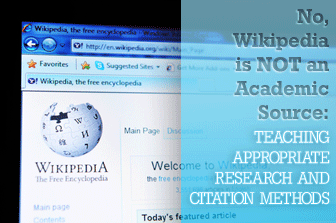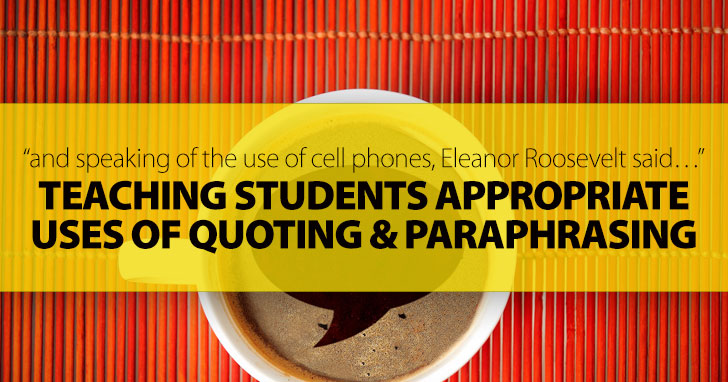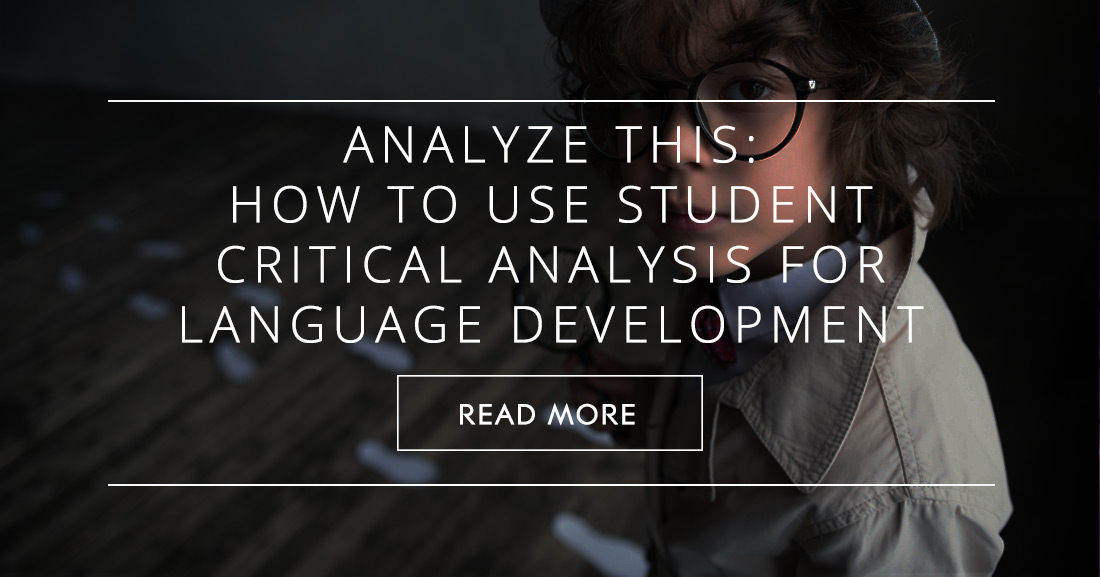No, Wikipedia is not an Academic Source: Teaching Appropriate Research and Citation Methods


In living memory, when doing research, you had to actually go to a physical library, look for a book or journal, which sometimes wouldn’t be available, and it would need to be ordered, which could take weeks. Those days are gone. Finding an obscure or treasure of a book is as simple as googling it. But this has also caused massive problems. How to tell, really, the difference between the valuable source of information and the less so?
How to sort out all of the massive information? Although the Internet will always be an invaluable place to turn to for information, sometimes it can also be important to leave the tangled Web for awhile and look for more traditional venues for source material.

I do not want to say that the Internet is all bad and no valuable information can be located there; although there can be massive problems in sorting it all out, there is a wealth of knowledge on the Web. In particular, the Internet is an excellent “jumping off” point for research as nearly every academic discipline maintains at least one major, reliable, and “vetted” website. For example, if I am researching English language learners, I can just google “English language learners” or “teaching English as a second language,” and I will very quickly find the website of one of the discipline’s seminal organizations, TESOL (Teachers of English as a Second Language): www.tesol.org. From here, I’ll be able to locate their major academic journal: TESOL Quarterly, which has in it a wealth of information and research about the profession.
Professional conferences are also a very good jumping-off point because it is at these conferences students will hear leaders in the field speak on a variety of current topics within the field of study. In addition, conference attendees will have the ability to discuss issues with other scholars and get their opinions on the state of the field of study, and also purchase, direct from publishers and sometimes the authors themselves, books and journals of the latest research. Even if students can’t go to a conference, viewing conference highlights and speakers, either online or in print journals, will give you an idea of what topics are current in a field, and this will suggest future areas of research.
Once the student has located a couple of important journals, either from an online source or a conference, from there she can find articles of interest that will lead her to more materials. If the area of interest is academic language, for example, she can find articles in the current or past issues of “TESOL Quarterly” or related academic journals and from there use the articles’ references of cited sources, which will take her to more articles or books of interest.
“Books are lonely. Don’t forget books,” a librarian recently advised my college composition class on the topic of doing research. There is a tendency today in research to rely on academic research articles, as they are more current, and also shorter and relatively easy to read. However, books will go into more depth than an article, often giving a complete overview of the entire topic and its history, and are of course a traditional source of knowledge. For example, the text Beyond the Beginnings: Literacy Interventions for Upper Elementary English Language Learners, by Carrasquillo, Kucer, and Abrams, taught me more about literacy, ESL students, and academic language than many articles I had read on those topics because of the breadth and depth it of the topic it was able to address.
Libraries are another very traditional and reliable source of knowledge and research; often even today a culture’s libraries represent its history and its knowledge. For example, a friend of mine is interested in genealogy, the study of family history, but found she could only go so far back in the past in her research using ancestry.com. Although it is a fine site, its scope is rather narrow, relying mostly census records, and it cannot rival in terms of research and materials available to the public at the Family History Library in Salt Lake City, the largest library of its kind in the world, with numerous trained volunteers, staff people, classes, and resources. My friend’s research eventually took her to this library.
Finally, interviews with an expert on the topic can be very valuable in guiding you at any stage of your research. At the beginning stage, for example, the interviewee can direct you to resources, help you ask the right questions for the direction of your research, and correct any misconceptions you might have, and help you refine positions you take on the topic. In addition, the personal interview can be an important source in and of itself, giving you valuable source material and quotations.
For the researcher with some more advanced skills, nothing on the World Wide Web can compare to actually seeing and analyzing a primary source or artifact. For example, my friend studying her family history was taken eventually to Virginia, where an ancestor of her husband’s fought on the Union side of the American Civil War. From viewing the actual battlefield where this ancestor died and recovering his sword (or probably his; it may also have belonged to one of two other men of the same rank who died that day on the battlefield), my friend encountered tactically and personally not only family history but also American history in general, learning details about a particular time period and its culture in a way that picking up a couple of sources from the World Wide Web simply cannot.
The Internet, although holding a wealth of information, often poses a tangled path through that information, either leaving the beginning researcher frozen, not knowing which direction to go in or how to start, or by providing no map and allowing to the researcher going off into too many directions. However, with the Internet as a starting point, a clearer path through the research can be taken through traditional sources of journals, books, libraries, and personal interviews.


